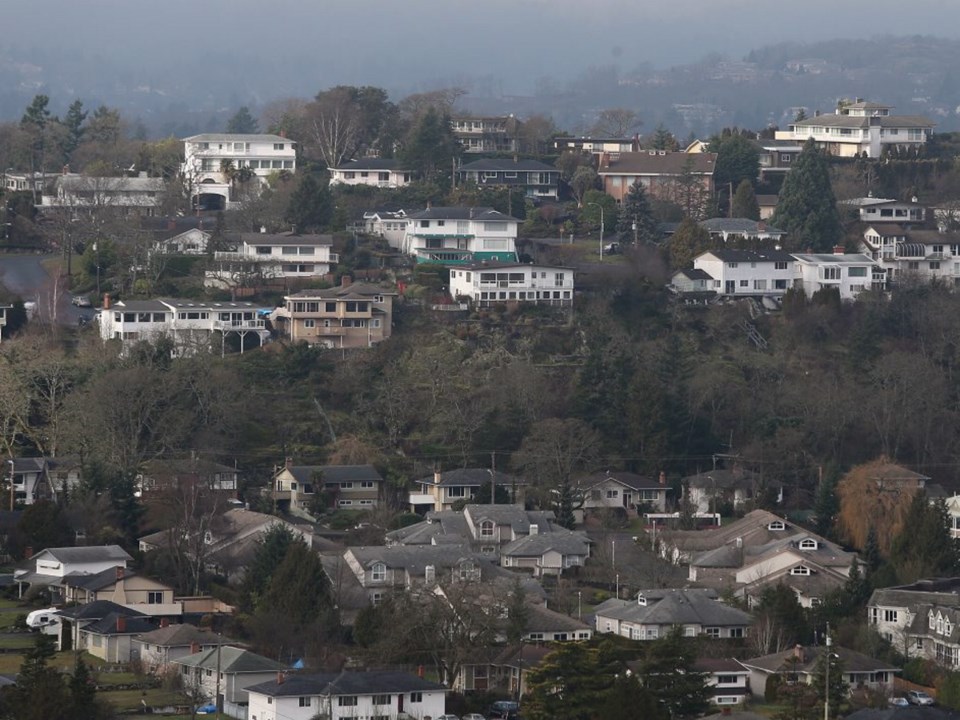 It wasn’t long ago that property-assessment hikes used to prompt comforting words from the government about how increases in the values were encouraging signs of a healthy, growing economy.
It wasn’t long ago that property-assessment hikes used to prompt comforting words from the government about how increases in the values were encouraging signs of a healthy, growing economy.
Those days are gone.
Property assessments now are almost toxic politically. Valuations that were once used as a measure of economic vitality are now a gauge of how completely out of reach homeownership is for many people.
The assessments themselves are largely out of government’s hands. The job of approximating real-estate valuations as of last July is technical work that involves plugging all the usual factors into the assessment authority’s system. The government’s political response comes shortly after, in the form of an announcement about the homeowner grant. More specifically, it’s about setting the threshold above which the full grant gets reduced.
It has been set policy in B.C. for decades to bestow the grant for the principal residence on as many homeowners as possible. The operative share for years was 95.5 per cent, although it has started slipping in the past few years. To ensure that big a percentage of homeowners gets the grant, the threshold has to move up as the values do.
The trend line described by that annual number is as much a reflection of the real-estate market as the assessments themselves. And the trend consists of two sustained periods of huge increases, with a five-year lull when the market cooled after the economic meltdown. The first jump was in the early 2000s. The second one has been underway for the past couple of years.
The number announced last week — $1.65 million — would have been unthinkable several years ago. The value used by the government as the benchmark to decide whether people are entitled to government help in paying their taxes has more than tripled in the past 15 years.
In 2003, the upper threshold for the homeowner grant was $525,000. It rocketed up to $780,000 by 2006. That was the year the B.C. Liberals were flush with cash and hiked the actual basic grant by 22 per cent, to $570 a year. (Seniors, the disabled and owners everywhere outside southwestern B.C. get more.)
Then-finance minister Carole Taylor set the 2006 level by noting it was another year of continued strength in the market, revealing confidence in the economy. But the 16 per cent overall rise in assessed value at the time would have pushed 27,000 homeowners over the threshold, and cost them the grant. So she followed the set pattern and raised it.
The next year, values kept going up and another 18,000 homeowners would have crossed the threshold. So it was raised again. There was reference then, as well, to the assessments “speaking to the underlying strength of B.C.’s economy.”
The threshold passed the $1-million mark in 2008 and stayed in that range for several years, dropping slightly one year. A nine per cent rise in assessed values prompted a lift to $1.2 million in 2016.
That was the year the market started overheating again. In January 2017, the Liberals responded with the biggest hike ever — a 33 per cent jump in the threshold, to $1.6 million. That was bumped up slightly to $1.65 million last week.
In the past few years, the Finance Ministry dropped mention of 95.5 per cent of homeowners being eligible for the full grant. The new figure is 91 per cent.
The more compelling number is the percentage of people who have given up all hope of ever affording a home. It’s unquantified, but significant.
And the $825 million that will flow out of the treasury in the form of homeowner grants won’t make much of a difference. The 60-year-old benefit has been around for so long it’s just accepted as a given.
About 97 per cent of capital region homes fall under the threshold, although only 83 per cent of metro Vancouver homes do.
Nobody is talking about assessments as a sign of underlying strength anymore. The indicator once seen as a sign of health is now a sign of a core weakness of the economy — the affordability crisis.



